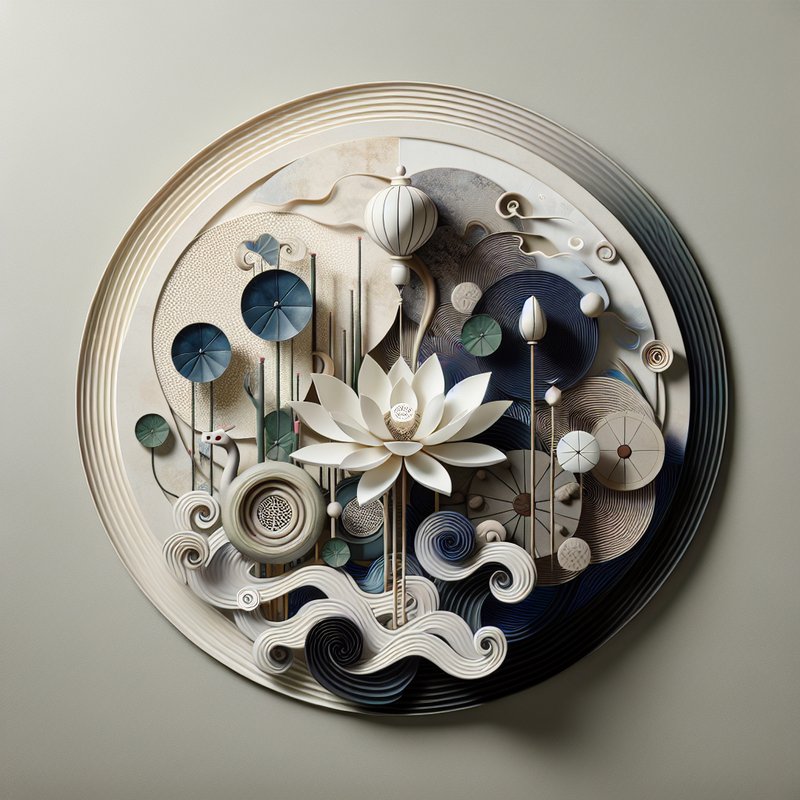The Evolution of Contemporary Art in Vietnam

The evolution of contemporary art in Vietnam is a story of resilience and creativity, reflecting the country’s tumultuous history. Post-reunification, artists began to distance themselves from socialist realism, aiming for individual expression. This change in artistic direction marked the beginning of a new era. With greater access to global art movements and philosophies, Vietnamese contemporary art has grown into a vibrant and eclectic field.
The ‘Đổi Mới’ (Renovation) period in the late 1980s and 1990s was pivotal for contemporary artists. This period allowed for economic and cultural liberalization, enabling artists to explore previously restricted themes and mediums. It was a time of experimentation, blending traditional Vietnamese elements with modern techniques.
Throughout the 2000s, Vietnamese contemporary art attracted international attention as artists began to showcase their work abroad. Biennales, art fairs, and international exhibitions began to feature Vietnamese artists, contributing to a growing appreciation and recognition of their work on the global stage.
Diverse Artistic Mediums and Techniques

Vietnamese contemporary artists employ a wide range of mediums and techniques, reflecting their diverse cultural backgrounds and experiences. From traditional lacquer and silk paintings to modern installations and performance art, the Vietnamese art scene is as varied as it is innovative. These artists often explore themes of identity, memory, and the intersection of past and present.
Lacquer painting holds a special place in Vietnam’s artistic heritage. Contemporary artists have reimagined this ancient technique, introducing new textures, materials, and themes. The result is a fusion of the old and the new, where traditional craftsmanship meets modern artistic expression.
In addition to visual mediums, performance art has become a popular avenue for expression among Vietnamese artists. Through performances that often address social issues or cultural narratives, artists engage audiences in a direct and powerful manner. This form of art allows for a dynamic interaction between the artist and the audience, further enriching the Vietnamese art experience.
Globalization and its Impact on Vietnamese Art

Globalization has played a significant role in shaping the contemporary art scene in Vietnam. With increased connectivity and influence from international art movements, Vietnamese artists have gained access to a broader spectrum of ideas and resources. This interconnectedness has enabled collaboration with artists from around the world, further enriching the Vietnamese art landscape.
The digital age has had a profound impact on the dissemination and reception of Vietnamese art. Social media platforms and digital galleries provide artists with new spaces to showcase their work and reach a global audience. This increased visibility has contributed to a growing interest in Vietnamese art, both domestically and internationally.
Despite the benefits of globalization, there have been challenges. Vietnamese artists face the struggle of maintaining their cultural identity while also adapting to global trends. This tension often leads to a hybrid form of artistic expression that navigates between the local and the global, tradition and innovation.
The Future of Contemporary Art in Vietnam

The future of contemporary art in Vietnam looks promising as a new generation of artists continues to push boundaries and challenge conventions. With the support of various art institutions and emerging art markets, these artists are poised to make significant contributions to the international art world.
Educational institutions and art residencies play a critical role in nurturing the talents of young Vietnamese artists. By providing access to resources, mentorship, and international networks, these platforms help artists develop their skills and build careers in the art industry.
Looking ahead, collaboration between local and international artists and curators will likely increase, fostering cross-cultural exchanges and new creative partnerships. Vietnamese art will continue to evolve as it embraces both its rich cultural heritage and the influences of the global art scene.

Leave a Reply